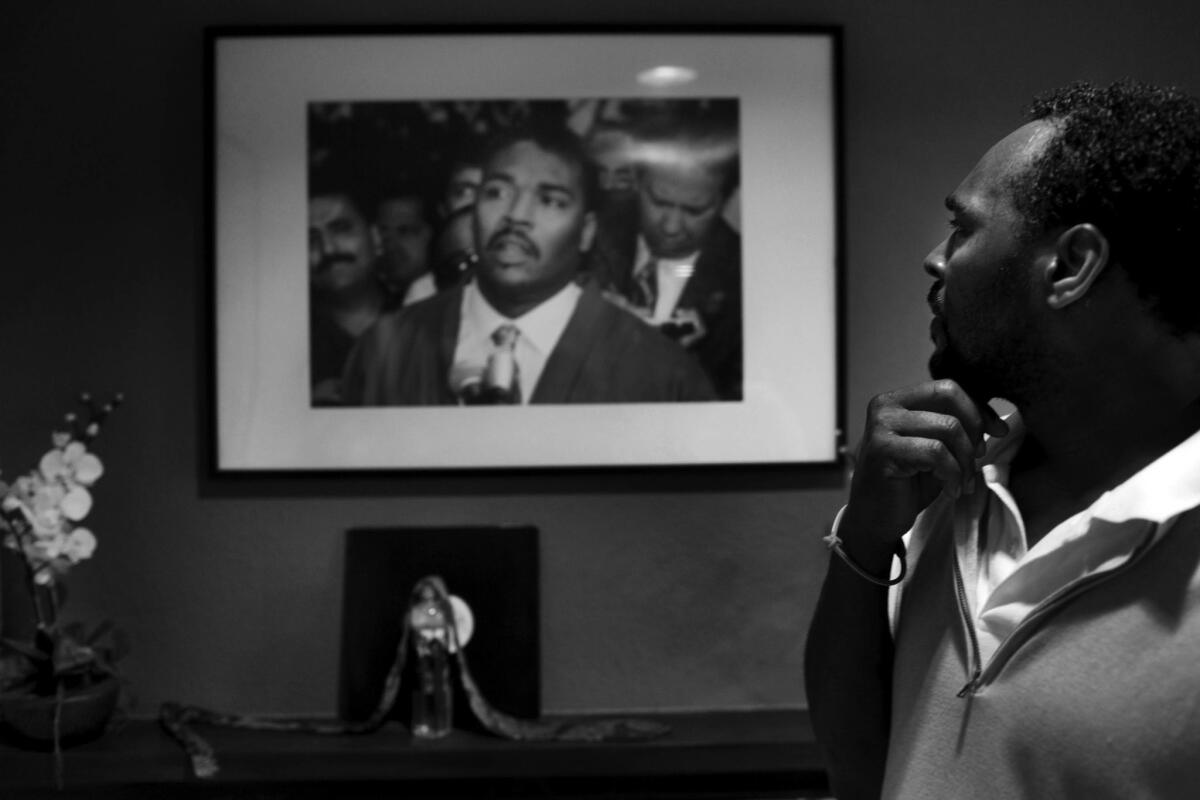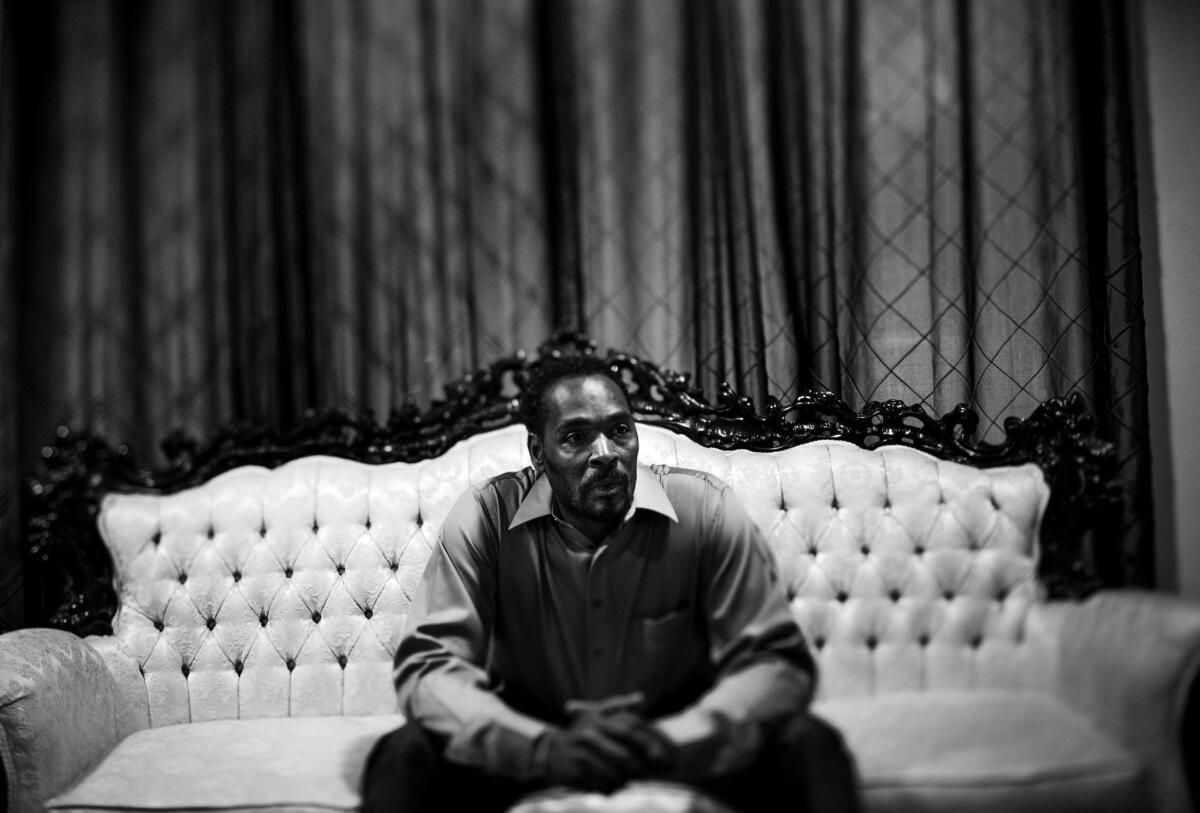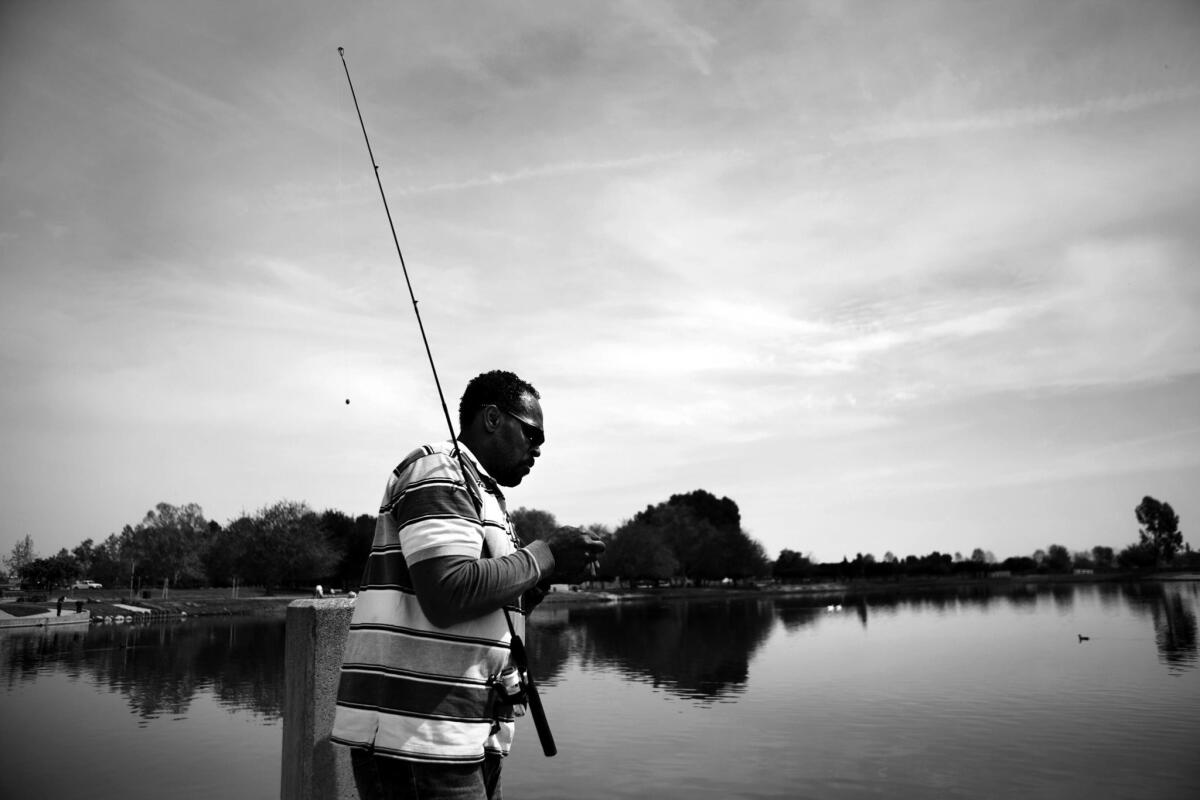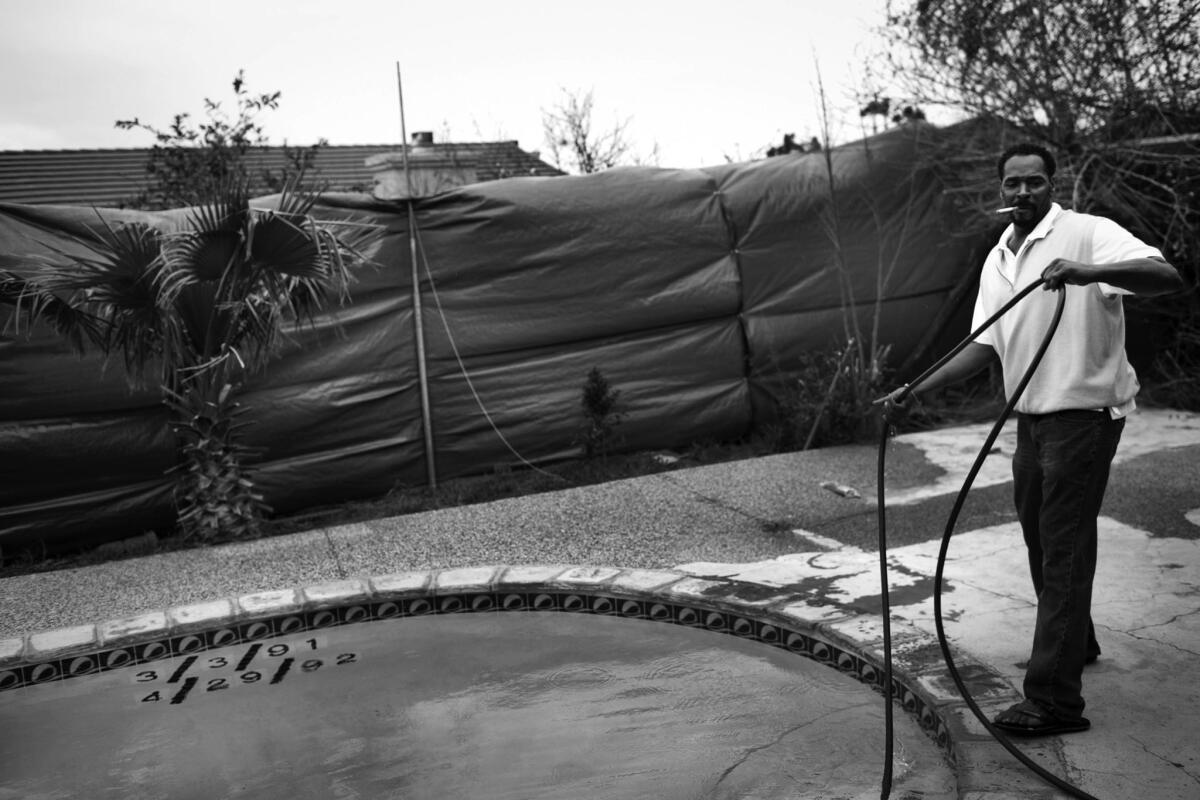From the Archives: Portraits of Rodney King

Rodney Glen King’s March 3, 1991, beating by police was videotaped and widely viewed in television broadcasts. The April 29, 1992, acquittal of four Los Angeles Police Department officers sparked Los Angeles riots.
In 2012, for the 20th anniversary of the riots, King released the autobiography “The Riot Within: My Journey From Rebellion to Redemption.”
These images by Jay L. Clendenin accompanied an April 23, 2012, article by Kurt Streeter. In the article, titled “The Past Still Grips,” Streeter wrote:
It has been 20 years this month since rioting brought Los Angeles to its knees. A jury had acquitted four police officers in the beating of King, unleashing an onslaught of pent-up anger. There were 54 riot-related deaths and nearly $1 billion in property damage as the seams of the city blew apart.
King remembers. He rubs his right cheek, numb since the beating, and describes what it was like to be struck by batons, stung by Tasers.
"It felt," he says, "like I was an inch from death."

Later he confides that he is at peace with what happened to him.
"I would change a few things, but not that much," he says. "Yes, I would go through that night, yes I would. I said once that I wouldn't, but that's not true. It changed things. It made the world a better place."
He is 47 now — jobless and virtually broke. Gone is the settlement money he got after suing the city for violating his civil rights. All $3.8 million of it. Huge chunks went to the lawyers, he says, some to family members, some he simply wasted.
The settlement did provide a down payment on the inconspicuous rambler that is his home in Rialto. He says he cobbles together mortgage payments. Every so often he gets hired to pour concrete at a construction site. He has earned small paydays fighting in celebrity boxing matches. He received an advance — less than six figures, he says, but significant nonetheless — for allowing his story to be told in a book set to go on sale Tuesday: "The Riot Within: My Journey from Rebellion to Redemption."...


Los Angeles Times staff photographer Jay L. Clendenin was a high school senior during the 1992 Los Angeles Riots. He recently wrote:
It was 20 years later that I met and spent time with Rodney King, the iconic figure that sparks differing opinions on the L.A. Riots, often depending on the neighborhood where you start the conversation.
He was a quiet man. Big. Imposing. Huge, but, gentle hands, swallowing up mine when being introduced.
What was strange for me in meeting him, was I saw him as more historic than many people I’ve photographed; Senators, civic leaders, movie stars, even a couple presidents.
He had become a celebrity by horrible accident. His beating and arrest by officers was broadcast around the world. He didn’t ask to be an icon or a martyr, it was thrust upon him and here Kurt Streeter and I were, in his living room, touring his home and even spending time fishing with him, because he had become such a figure in our history.
The most memorable photos I made around King at his home, were by the pool. He had tiled the date of his beating and the date of the not-guilty verdict of the officers that did it to him, which was the start of the Riots.
We asked him about the dates, he spoke quietly, as if remembering those two days like they were yesterday, then shifted to telling us how relaxing the pool was for him and what great exercise it was.
Less than three months later, King was found dead, in that pool at the age of 47.
On June 17, 2012, Rodney King died. That day, a short obituary appeared in the Los Angeles Times L.A. Now blog: “Rodney King, key L.A. riots figure, dead at 47.”
